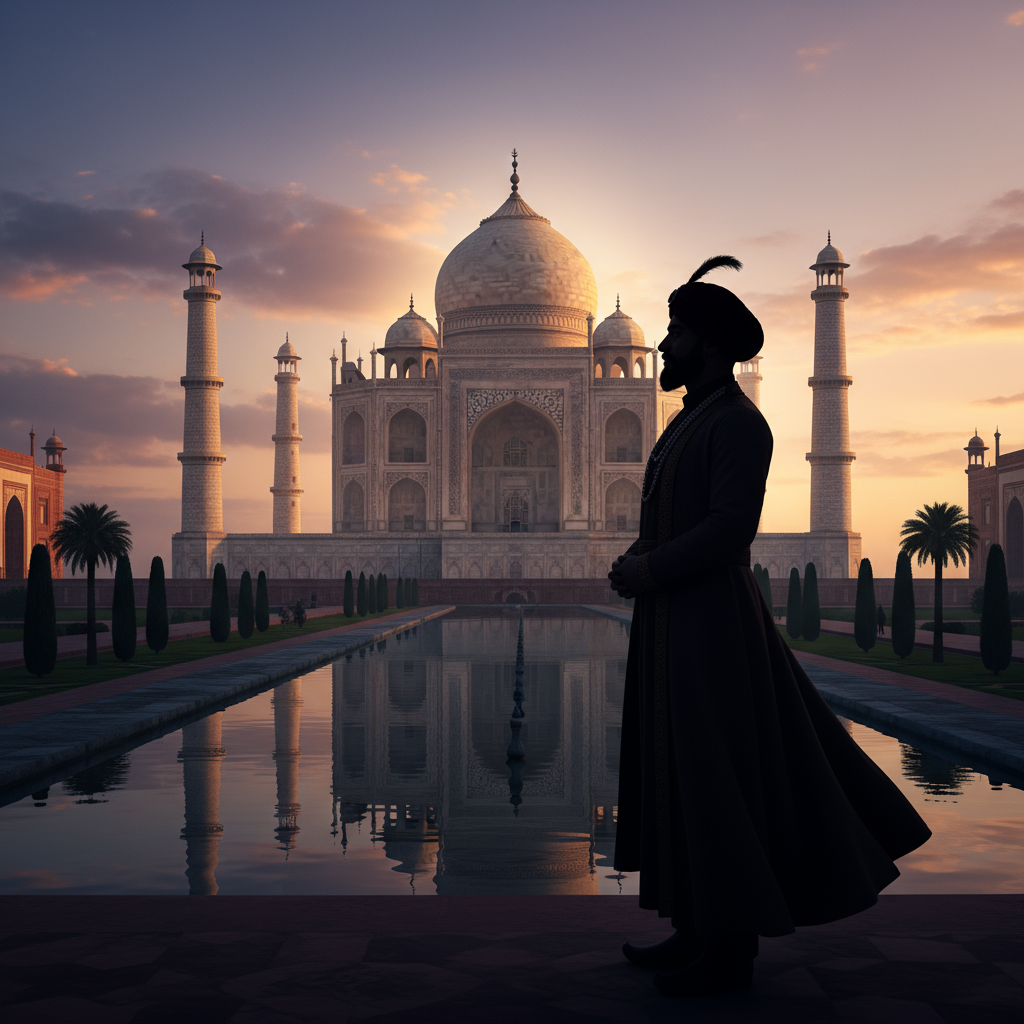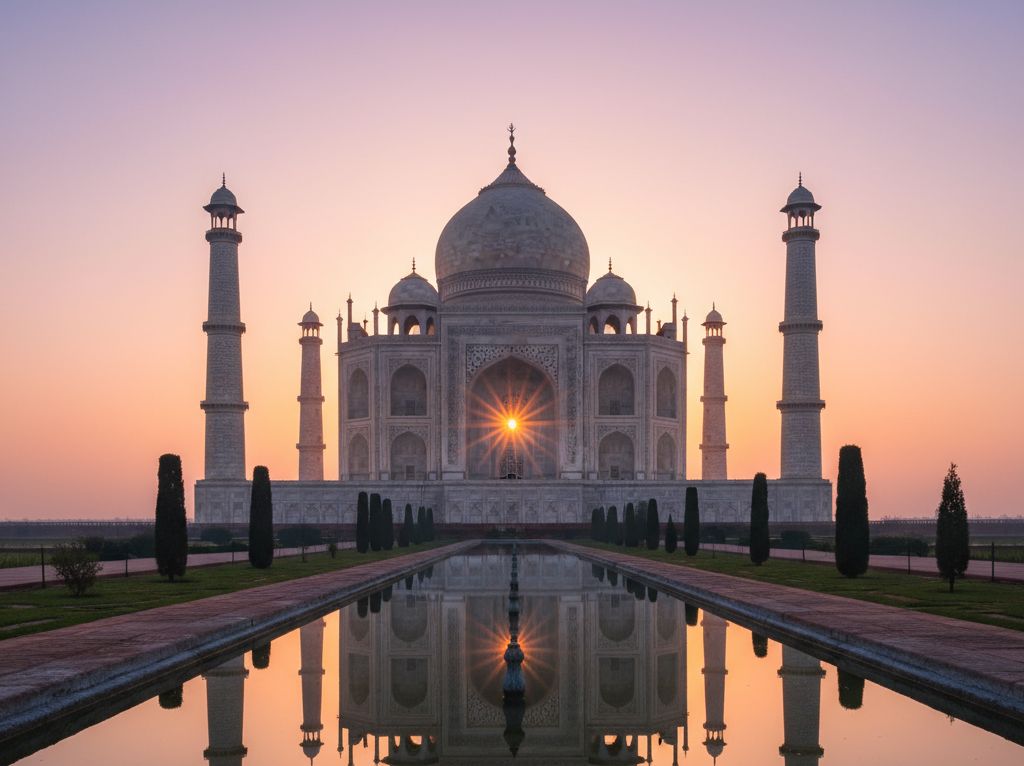A Monument Born of Love and Loss
Emperor Shah Jahan commissioned the Taj Mahal in 1631 as an eternal testament to his beloved wife, Mumtaz Mahal (“Beloved Ornament of the Palace”), who tragically died during childbirth that year. Construction began in 1632 and the central mausoleum was completed by around 1638–39, with surrounding structures and gardens finalized by 1643 and decorative work continuing until at least 1647—spanning over two decades of relentless devotion.
Architectural Mastery: Fusion of Cultures
The Taj Mahal stands as the pinnacle of Mughal architecture, blending Persian, Islamic, and Indian design principles.
Symmetry and Harmony: The complex’s perfect bilateral symmetry centers on the white marble mausoleum, flanked by identical red-sandstone mosque and guest house.
Material Marvels: Makrana marble, jasper, jade, and semi-precious inlays create intricate pietra dura patterns; red sandstone pathways guide visitors through lush gardens inspired by paradisiacal descriptions in the Qur’an.
Innovative Engineering: A double-dome structure enhances acoustics and proportions; four slender minarets lean slightly outward to protect the main tomb in case of collapse.
The Human Story: Shah Jahan and Mumtaz Mahal

Their romance began in 1607 when a young Shah Jahan first glimpsed Arjumand Banu Begum selling silks in the Agra bazaar. After five years of pursuit, they married in 1612, and Mumtaz became his chief confidante, accompanying him on military campaigns and managing the imperial seal. Her sudden death in June 1631 during the birth of their 14th child devastated the emperor, who mourned in seclusion for two years before breaking ground on the Taj Mahal.
Myths and Legends: The Black Taj and Beyond
Popular lore speaks of a “Black Taj” opposite the white mausoleum, intended as Shah Jahan’s own tomb. According to 17th-century accounts, this ebony counterpart was interrupted by his son Aurangzeb’s revolt and subsequent house arrest of the emperor, thwarting any chance of its completion. While some historians dismiss the tale as romantic myth, the legend endures as a testament to Shah Jahan’s unending grief.
Legacy and Contemporary Significance
Designated a UNESCO World Heritage Site in 1983, the Taj Mahal attracts 7–8 million visitors annually and remains one of the New Seven Wonders of the World. Beyond its architectural brilliance, it symbolizes universal themes of love, loss, and peace—transcending cultural and geographical boundaries to inspire humanity for generations to come.
“Pure love is the soul of life.”
The Taj story is not merely a historical narrative but a living legend—its marble walls echoing a love that even time cannot erode. Understanding this monument’s origins and enduring appeal reveals why the Taj Mahal continues to captivate the world’s imagination.



